It’s a discussion that has tested scientific minds for many years. The argument goes that when a fly collides with an oncoming train, both the fly and the train must stop momentarily due to Newton’s Third Law. So, in that nanosecond when the fly stops to change direction, it is in contact with the train and logically, therefore, the train must have stopped too.
I’m no scientist, but this fascinated me, not least because it suggests that even a very very small action can have an enormous impact. Think of that analogy in our marketing world and you’ll start to see what I’m getting at – even a small jolt, if done right, can have a disproportionately positive effect.
So goes the theory, but can this work in practice?
Did you know that one of the leading causes of death in children under 5 is diarrhoea? According to UNICEF, every year millions of children in developing countries die from infections and illnesses such as diarrhoea. It’s a terrible truth, and one that Reckitt Benckiser brand Dettol is tackling head-on, simply by teaching people to wash their hands before eating. Its Global Handwashing initiative aims to cut infant deaths in half by 2027, and it’s working. Saving countless live, simply by encouraging the adoption of a simple, small habit.
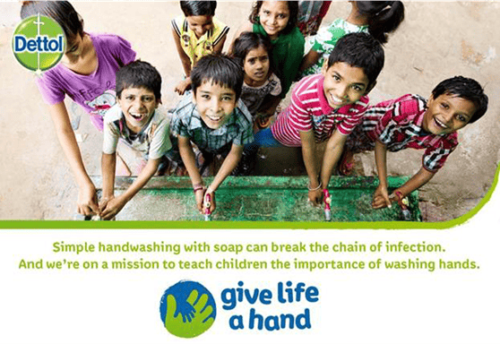
Penned in 1925 by John Caples, a rookie writer at Ruthrauff & Ryan in New York, this ad is often considered one of the most popular and successful in history. Adage called it “arguably, the 20th century’s most successful” mail-order copy. The ad, for a home-study course offered by the US School of Music, tells the story of Jack, who delivers a flawless performance of Beethoven’s Moonlight Sonata, stunning his friends who thought he couldn’t play a note. It was an astonishing success, bringing in a record number of coupons when it appeared in Physical Culture magazine, and went on to run for several years and was much imitated. Of course, the ad is storytelling at its most perfect, tapping into people’s own emotional needs. As Caples said, “First you need to enter the conversation going on in your prospect’s mind”.
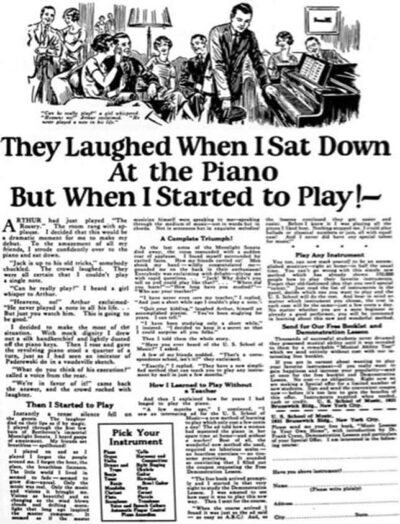
It didn’t appear in any ads, and the claim emblazoned on its side was hugely criticised, quickly debunked, and now been proven false. And yet…years later, Dominic Cummings, the Campaign Director of Vote Leave, said the bus slogan was one of the main reasons why the Leave campaign won the EU referendum. “Would we have won without £350m/NHS? All our research and the close result strongly suggests No.”
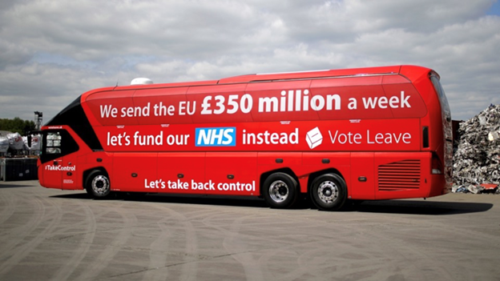
That’s all it took. Hathaway shirts had a tiny budget and was largely unknown, facing many, bigger competitors. Legend has it that on his way to the shoot, David Ogilvy stopped off at a New York drugstore to buy a few 50 cent black eyepatches. Handing over the eyepatches to the photographer, Ogilvy told him: “Just shoot a couple of these to humour me. Then, I’ll go away and you can do the serious job.” The rest is history. The Hathaway campaign had instant ‘story appeal’, arousing reader curiosity. It made Hathaway instantly famous. Its first insertion in The New Yorker cost just $3,000 but within a week, every Hathaway shirt in the city was sold. As Ogilvy later said, “It made Hathaway instantly famous. Perhaps, more to the point, it made me instantly famous.”
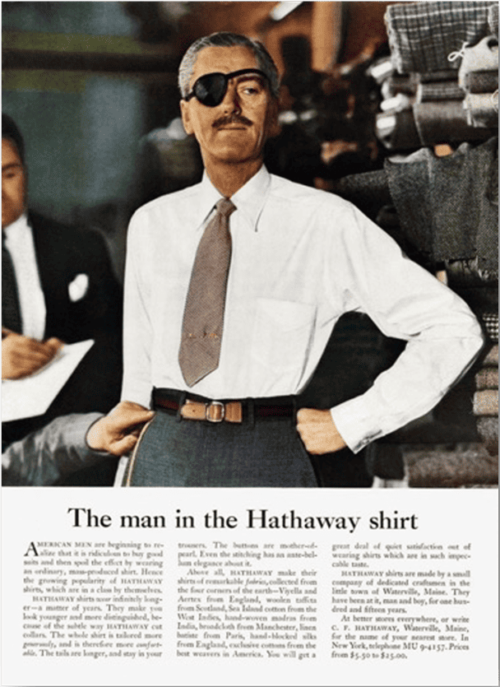
It was 2018 and KFC had screwed up. In the process of changing its chicken supplier, problems forced the chain to close hundreds of its stores due to a lack of chicken. There was instant uproar, with people even calling the emergency services to complain. It was a disaster for KFC, until they apologised. In fact, they apologised really well, with a full page ad in the Sun and Metro newspapers which showed an empty bucket of chicken. It turned a PR nightmare into the greatest apology in the history of advertising, prompting 700 press articles and TV discussions, mass forgiveness, and it even won a bucket of awards, including a Cannes gold Lion.
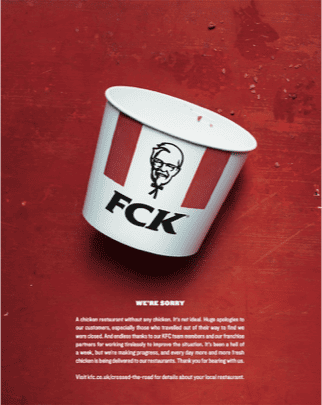
Dave Trott claims that this is where modern advertising began, with the 1959 campaign for the VW Beetle, an ugly and noisy little German import, back at a time when Americans were choosing bigger and flashier cars. Created by DDB, the Beetle campaign was ranked the best advertising campaign of the twentieth century by Adage and transformed the car from Hitler’s brainchild to the world’s most popular car by the early 70s.
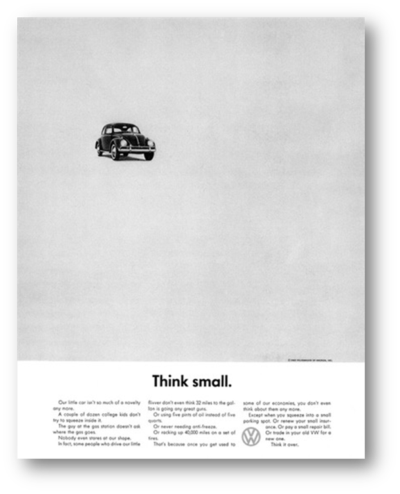
A campaign I worked on, to support the launch of a new single-serve format for Whiskas cat food. Rather than make the obvious advertising and run it over weeks, we came up with a novel plan – let’s create a one-off event to kick-start the brand. The idea was to make the first ever ad for cats. Working with animal behaviourists, we created a film designed specifically to elicit a reaction from those notoriously indifferent felines. In the end the ad ran for a week and had an immediate, massive impact, picked up by major news networks it was a major story across the world, from Good Morning America, to News at Ten, to Chinese state TV. As a result, a Mars analysis established that it was probably the most-watched ad of all time. It even sold some cat food.
Formally titled “Peace, Little Girl,” but more commonly known as the “Daisy” ad, this might be the most famous and impactful political ad of all time. The ad never shows, or even mentions Johnson’s opponent, yet delivers a powerful message that Barry Goldwater would likely start a nuclear war. It aired only once, but its impact was instantaneous. It’s considered one of the most important factors in Johnson’s landslide victory over the Republican Party’s candidate, Barry Goldwater (he received one of the largest margins of the popular vote in the United States ever) and a turning point in political (and political advertising) history.
So there’s no doubt in my mind that a fly can indeed stop a train. Of course, to be successful, the fly has to pack a real punch.
In other words, you need a really big idea – innovative, different, unexpected, brilliant. This is not about media spend; in fact, quite the opposite. It’s the sharpness of the nail that counts, not the size of the hammer. All the examples I’ve mentioned tick this box big-time.
This is something that we know about at Maverick, getting maximum impact from even the most limited budgets. A smaller budget doesn’t dictate a smaller idea.